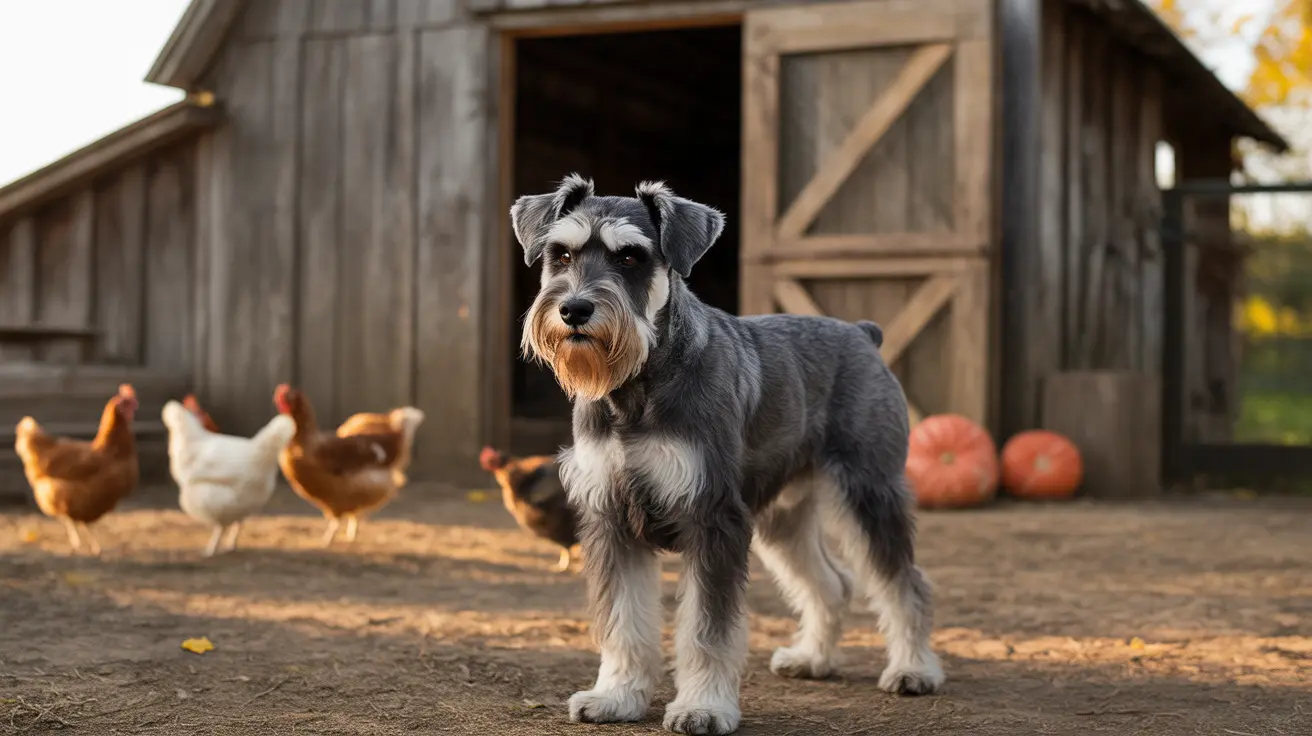The Origins of the Schnauzer Breed
Schnauzers emerged in medieval Germany, particularly in Bavaria, between the 14th and 16th centuries. Their name derives from the German word "schnauze," meaning snout or muzzle, referring to their distinctive facial hair. The Standard Schnauzer was the original type, from which both smaller and larger varieties would later be developed.
These dogs were created by crossing various working breeds, including German Pinschers, Poodles, and Spitz-type dogs, to produce an intelligent, versatile farm dog with a weather-resistant coat and strong work ethic.
Primary Working Roles on German Farms
Schnauzers were primarily bred as all-around farm dogs, capable of performing multiple essential tasks:
- Ratting and vermin control
- Guarding property and livestock
- Herding sheep and cattle
- Protecting merchants and their goods
- General farm work and companionship
Development of the Three Schnauzer Sizes
Each Schnauzer variety was developed for specific working purposes:
Standard Schnauzer
- Medium-sized all-purpose farm dog
- Excellent at ratting and general farm work
- Skilled guardian and herder
Miniature Schnauzer
- Specialized ratter for homes and barns
- Developed specifically for catching smaller vermin
- Became popular as a house dog while maintaining working abilities
Giant Schnauzer
- Bred for driving cattle and guarding property
- Later used in police and military work
- Excellent at protecting large areas and handling livestock
Working Traits and Characteristics
Several key characteristics were deliberately bred into Schnauzers to help them excel at their jobs:
- High intelligence and trainability
- Strong protective instincts
- Weather-resistant double coat
- Robust health and stamina
- Natural alertness and vigilance
- Strong prey drive for vermin control
Modern Roles and Applications
Today's Schnauzers maintain many of their original working traits while adapting to modern life. They excel in various roles:
- Family companions and watchdogs
- Police and military service dogs (Giants)
- Therapy and assistance animals
- Competition dogs in agility and obedience
- Search and rescue work
Frequently Asked Questions
What were Schnauzers originally bred to do on German farms?
Schnauzers were bred as versatile farm dogs capable of ratting, guarding property, herding livestock, and protecting against intruders. They were valued for their ability to perform multiple tasks efficiently.
How did the roles of Standard, Miniature, and Giant Schnauzers differ in their working history?
Standard Schnauzers were all-purpose farm dogs, Miniature Schnauzers specialized in ratting and vermin control, and Giant Schnauzers were primarily bred for cattle driving and property protection.
Why were Schnauzers valued for ratting and guarding tasks in medieval Bavaria?
Their keen intelligence, strong prey drive, and natural alertness made them excellent at controlling vermin populations and protecting farms from thieves and predators.
How did breeders develop the Miniature Schnauzer from the Standard Schnauzer?
Breeders crossed smaller Standard Schnauzers with breeds like Affenpinschers and Miniature Pinschers to create a compact, agile dog specifically for ratting in homes and barns.
What working traits make Giant Schnauzers suitable for herding and police work?
Their size, strength, intelligence, trainability, and natural protective instincts make them excellent at controlling livestock and performing police duties.
The fascinating history of Schnauzers as working dogs continues to influence their temperament and abilities today. Whether serving as family companions or working dogs, they maintain the intelligence, versatility, and dedicated work ethic that made them invaluable on German farms centuries ago.






